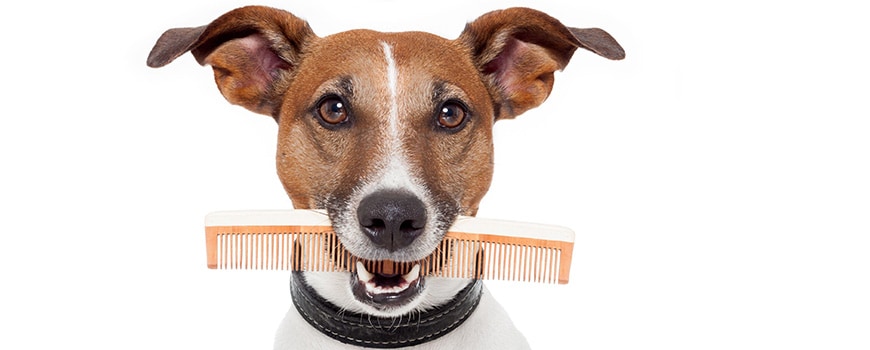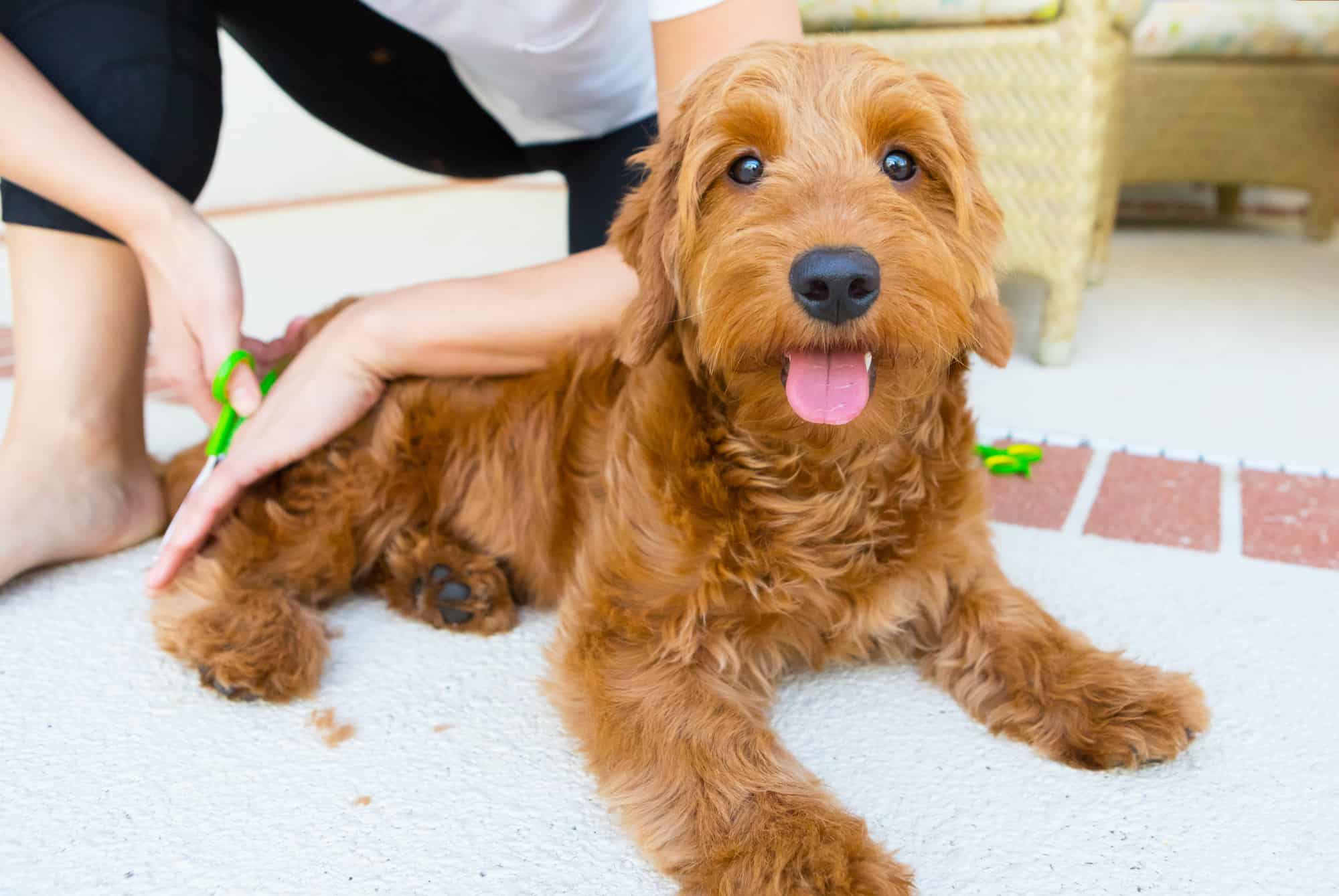Desensitization and counter-conditioning are two tools that can help your dog to feel more comfortable while being groomed. Therefore, you will want to skillfully use them in your daily interactions with dogs!
As a reminder, desensitization is the process of working slowly, at the dog’s pace, to gradually expose the dog, over time and at a distance, to something he doesn’t initially feel comfortable around. An example would be with nail clippers.
Using desensitization, we would slowly, over a period of time, and at a pace that the dog indicates he’s comfortable with via his body language, have the clippers move closer and closer to the dog. This process could even begin at home.
Counter-conditioning involves pairing a “scary trigger” with something that the learner finds pleasant. In the nail clipper scenario, each time the dog initially chooses to look at the clippers, we offer a yummy treat. That is we want the appearance of the clippers to equal yummy treat.
The order of operations is important here, as you want to be certain that clippers predict the treat and not the other way around. Often, as noted, desensitization and counter-conditioning are combined for the fastest results.
Another example of how desensitization and counter-conditioning would work might be with scissors. Many dogs might have a scary association with scissors, but by using desensitization and counter-conditioning we can help the dog to feel more comfortable with them.
If the dog initially shows signs of stress in the presence of scissors, you might put them down on the table and wait for the dog to look at them calmly. When the dog does this, you can give him a yummy treat.
Another example might be with the electric clippers. If the dog shows signs of stress at the sound of the clippers, you may just turn them on and off several feet away from the dog to start, and treat for a calm response. This process then helps to create a positive conditioned emotional response (CER) whereby the sound of the clippers starts to mean that good things are going to happen! Here too, the order is key. Clicker noise predicts treat, not treat predicts scary clicker noise.
The same technique can be used to counter-condition (CC) to any tool. Let’s give one more example, this time using a brush. We want “brush” to equal “happy, fun experience,” so we will pair the brush with something that the dog really enjoys. We’ll start slowly (using desensitization), perhaps by just showing the pup the brush and feeding a tiny bite of something considered (again, by the dog) to be tasty.
Next, we’ll let the dog eat a piece of the treat while we gently put the brush close to the dog’s coat. Be sure that the brush appears before the treat. The following step would be to continue to work brushing longer and all around the
dog’s body while pairing the happy feeling from the treat with the brush.
This process may be slow and will certainly require repetition—the question of how much and how long will depend on the dog’s history, severity of anxiety, and the time that the caregiver and/or groomer is able to dedicate to the protocol of desensitization and counter-conditioning.
However keep in mind that if you rush through the process at the start, you may get the brushing done, but the process will prove to be exponentially more difficult the next time you bring out the brush. As such, dedicating additional time at the beginning—to help the dog feel relaxed around the brush via counter‑conditioning and desensitization—will go a long way toward a dog that can calmly and easily tolerate brushing in the future.
If, for example, a dog has more severe anxiety about a certain grooming tool, you’ll want to move even more slowly. In this case, with distance as your friend, you’ll want to have the dog just look at the tool from distance at first.
Then you can employ counter-conditioning too, whereby you feed the dog small pieces of something amazing while the tool is present, but nowhere near the dog. In this exercise, the “trigger” should be far enough away to not elicit fear, but close enough to be noticed.
Very slowly you’ll bring the tool closer to the dog. If you repeat this procedure enough times, eventually the tool will equate to happy feelings. Always be sure that the dog sees the potentially “scary” tool before you provide the treat.
You want to be certain to do this in the correct order such that the tool equals the yummy treat vs. the yummy treat predicting the “scary” tool. This is a key component.
This process can be replicated with any specific tools that a dog is afraid of. It can also be used if a dog is anxious around all tools, and/or has never been in the presence of any. In such a case, you might need to perform this process with each individual tool. This activity can also be started in the home.
Offering the service of teaching families how to collaborate with the processes of desensitization and counter-conditioning presents another opportunity for groomers to earn extra income.
Again, the benefit here is that you will have a more relaxed dog that enjoys coming to the shop because he isn’t frightened of the tools. This work also helps build a relationship with the dog’s family, as they will feel like partners in the task of helping their dog to feel more relaxed and to enjoy the grooming experience.
While teaching these techniques to the dog’s guardians, you might note that the family could also benefit from a correct-brushing lesson. You can explain to the owners that such a lesson will not only build the dog’s confidence and keep his coat shiny but will also help to desensitize him to being brushed and handled at home and at the shop.
TIP:
What should you do if you have a dog that is afraid to enter the shop? You can use desensitization and counter-conditioning to help him to feel more comfortable. For example, if a dog comes to the shop door and looks at you, we suggest tossing a treat on the ground.
If the dog eats the treat, then looks up, we recommend tossing another treat. Now, if the dog is reluctant to go inside the grooming shop, you might take a walk with the guardian and dog, away from the shop, in order to desensitize the dog to your presence before going inside.
This will also enable you to note the threshold (the point where the stress starts to be visible when the dog is approaching the shop), and to start to work on the Meet and Treat there, during which you can do a little training with the dog, reinforcing any calm behavior. You might ask for some easy behaviors such as a name recall, eye contact, sit, or any other behavior that the dog may know.
The goal is to keep the dog engaged and to reinforce behaviors that you like. In this way you are building confidence, working on your relationship with the dog, and creating a positive conditioned emotional response (CER).


